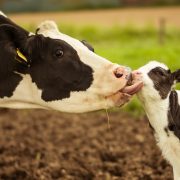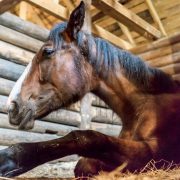The Confidential Enquiry into Perioperative Equine Fatalities: phase 4 (CEPEF4) – a worldwide observational, prospective, multicentre cohort study in 2025
The Confidential Enquiry into Perioperative Equine Fatalities: phase 4 (CEPEF4) – a worldwide observational, prospective, multicentre cohort study in 2025

our summary:
Gozalo-Marcilla, M. et al. (2025) The confidential enquiry into perioperative equine fatalities: phase 4 (CEPEF4). A worldwide observational, prospective, multicentre cohort study in 2025. Veterinary Anaesthesia and Analgesia, 52 (5), pp. 525-538.
The aim of this observational, prospective study, which updates the CEPEF2 study published in 2002, was to report data on equine anaesthetic mortality, and to assess current anaesthetic practice, risks and potential preventative measures.
A cohort of 93 centres in 28 countries participated in the study. There were 47,396 horse or pony general anaesthesia (GA) cases from November 2020 to June 2023 available for analysis. Information was collected on 249 variables covering signalment of the horse, anaesthetic protocol, and outcome within the 7-day period post GA, including sex, age, body condition score, physical status, indication for GA (colic or non-colic), timing, duration, premedicated drugs, and recovery. Each centre had an ambassador appointed for communication, to ensure data quality and strict data confidentially. Case outcomes at Day 7 were classified as ‘Alive’ (discharged or alive); ‘Euthanasia’ (death due to pre-existing disease or economic constraints); or ‘Dead’ (died unexpectedly or euthanised due to perioperative complications).
Within the 7-day post GA period, there were 44,187 ‘Alive’, 2,660 ‘Euthanasia’, and 549 ‘Dead’ cases. The overall death rate was 1.2%, for non-colic cases the death rate was 0.6% (227 cases) and for colic cases it was 4.2% (322 cases). For non-colic cases the main causes of death were fractures, abdominal complications, and central nervous system problems. Of the colic ‘Dead’ cases 37.9% died during recovery, and 17.4% on day 1 post GA.
Analysis showed an increase in the odds of death for pregnant mares, geriatric horses, thin horses, urgent procedures, and procedures lasting less than one hour or more than two hours. Ketamine infusions and plasma lactate measurement during maintenance were associated with elevated risk.
Monitoring invasive arterial pressure, end-tidal CO2, blood gases and body temperature were each associated with reduced odds of death. Premedication with partial agonist or agonist/antagonist opioids plus NSAIDs as analgesics, and use of alpha2 alone or acepromazine plus alpha2 during recovery were associated with lower mortality risks.
Limitations of the study include potential human errors in the completion of forms and classification of mortalities, and possible selection bias as the participating centres were either invited or volunteered.
The CEPEF4 study provides evidence that, when compared to the 2002 study, the overall death rate within the 7-day period post general anaesthesia has decreased. The study highlights a number of potential risk factors that will assist equine practitioners with their clinical decision-making and enhance patient safety.
Reference for earlier study
Johnston, G. et al. (2002) The confidential enquiry into perioperative equine fatalities (CEPEF): mortality results of Phases 1 and 2. Veterinary Anaesthesia and Analgesia, 29 (4), pp. 159-170. https://doi.org/10.1046/j.1467-2995.2002.00106.x
inFOCUS: Evaluation of the use of midazolam as a co-induction agent with ketamine for anaesthesia in sedated ponies undergoing field castration. [RCVS Knowledge] [online] Available from: https://infocus.rcvsknowledge.org/evaluation-of-the-use-of-midazolam-as-a-co-induction-agent-with-ketamine-for-anaesthesia-in-sedated-ponies-undergoing-field-castration/ [Accessed 24 August 2025]
Bennell, A. (2021) In horses undergoing volatile anaesthesia, does intraoperative alpha-2-agonist infusion improve recovery? Veterinary Evidence, 6 (1), https://doi.org/10.18849/ve.v6i1.341
Robinson, A. (2023) In horses undergoing volatile anaesthesia, is recovery quality superior with sevoflurane compared to isoflurane? Veterinary Evidence, 8 (1). https://doi.org/10.18849/ve.v8i1.582
In the Spotlight: Reducing errors in veterinary practice: risk and error in veterinary practice [RCVS Knowledge] [online] Available from: https://infocus.rcvsknowledge.org/revp-risk-and-error-in-veterinary-practice/ [Accessed 24 August 2025]
Claiming CPD for reading inFOCUS articles
Reading and reflecting on articles can count towards your CPD, and we have a template to help you with the process.
Image copyright attribute: elen1









Leave a Reply
Want to join the discussion?Feel free to contribute!